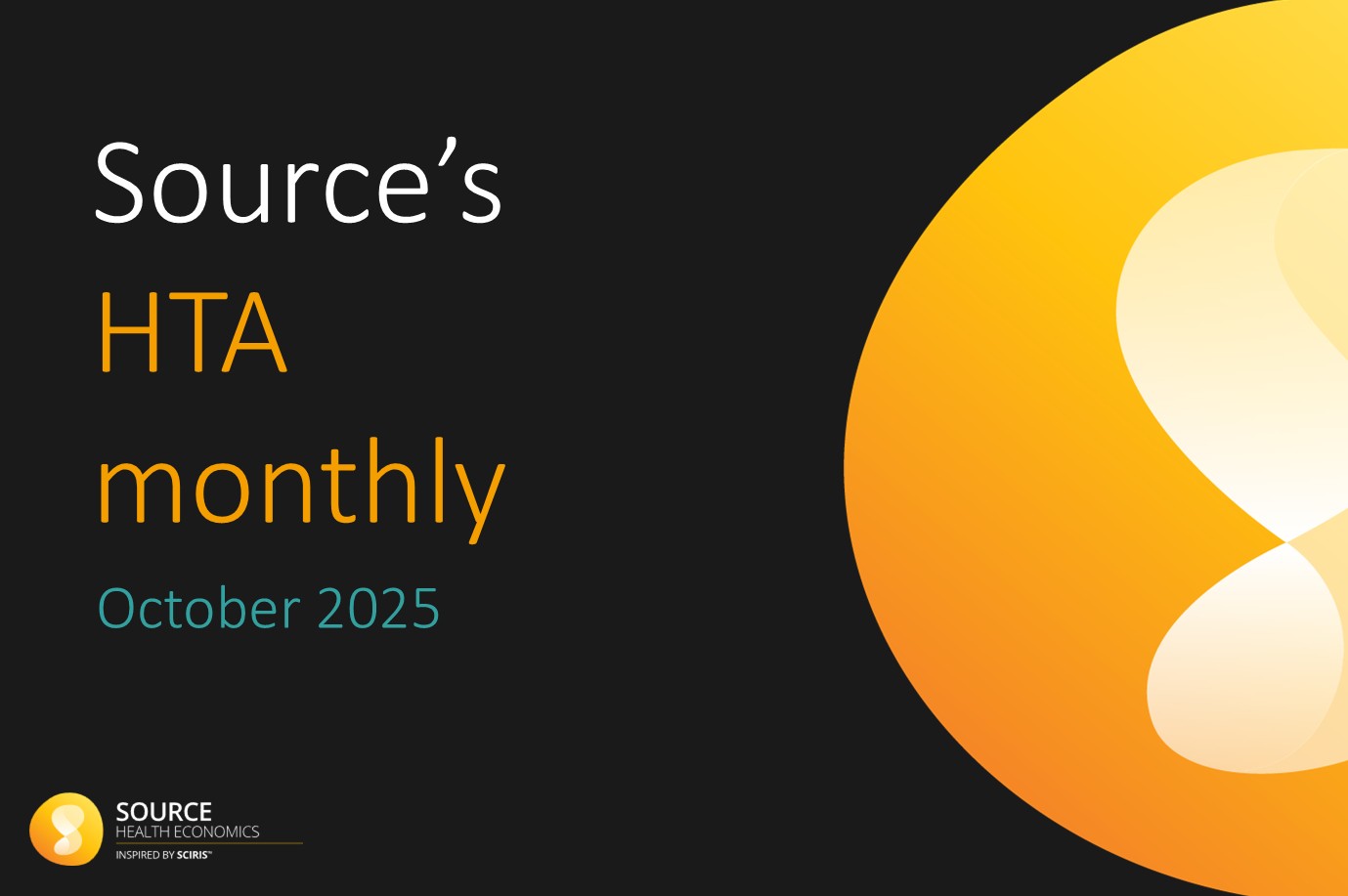By Kiera Lander
October brought real movement across the health technology assessment (HTA) landscape — not just in HealthTech, but across medicines, strategy, and international collaboration. From National Institute for Health and Care Excellence (NICE) expanding its remit to include digital tools, to the Scottish Medicines Consortium (SMC) refining ultra-orphan processes and NICE International extending its global reach, the message is clear: evidence expectations are evolving, and integration across systems is accelerating. This month’s updates are summarised below.
Did you see a NICE x HealthTech expansion coming?
One small step for health technologies, and one giant leap for the healthcare, everywhere? NICE has formally put health technologies on equal footing with medicines. Devices, diagnostics, and digital tools will now be assessed with the same rigour as new medicines, marking a step change in how innovations enter the National Health Service (NHS).
-
- Why it matters: This expansion should help tackle uneven adoption of HealthTech across regions, ending the postcode lottery that has held back promising technologies like wearable diabetes monitors and artificial intelligence (AI)-based diagnostics. And as we know, AI dominates discussions across dinner tables, and will inevitably be used more in our healthcare landscape, from robotic surgeries taking off to preventative medicine becoming a central aim in the global landscape.
- What this means: For digital health innovators, this signals a shift towards more rigorous and transparent evidence expectations. Companies will need to develop robust economic models, clear value frameworks, and early strategies for stakeholder engagement that mirror those used in medicine appraisals. The focus will be on demonstrating real-world value beyond clinical efficacy — showing how a technology improves patient outcomes, workflow efficiency, and system sustainability. In other words, it’s applying the same principles of health technology assessment (HTA) to a different kind of intervention.
NICE’s first high-impact topics are due to be announced in December with appraisals beginning in February 2026. Early movers will already be preparing submissions to benefit from this pathway — something worth discussing!
A ‘rare’ SMC update: Ultra-orphan medicines
The SMC has refined its process for ultra-orphan medicines, which have been under initial assessment since 2019.
-
- Change: Initial assessments will still involve the New Drugs Committee, but no longer require full SMC committee discussion at this stage. Patient and clinical expert input remains central, and timelines for publication will not be impacted
- Impact: This update is a minor improvement to help streamline the initial assessment phase
- What this means: Real-world evidence (RWE), scenario analyses, and economic models that address uncertainty remain essential. Companies should ensure their evidence generation plans are both methodologically robust and strategically aligned to withstand scrutiny during reassessment.
The NHS gives us a 10-year plan
NICE has set out its role in delivering the government’s 10-Year Health and Care Plan. It comes with the motivation to improve access to at-home care, shift the admin burden to a more digitally design care process, and explore preventative medicine further, as the NHS continues to minimise our reliance on reactive care.
-
- What does this mean: Well, a few headline priorities:
-
- Faster, fairer rollout of high-impact HealthTech – building on the expanded HealthTech program
- Updating guidance to drive smarter spending – a “whole lifecycle” approach, keeping guidance live and responsive to new evidence and costs
- First example: updated chronic heart failure guidance, giving patients access to life-saving medicines up to a year earlier, and expanding general practitioner (GP) prescribing
- Parallel decisions with Medicines and Healthcare products Regulatory Agency (MHRA) – by April 2026, regulatory and HTA decisions will be aligned, aiming to bring new medicines to patients 3–6 months faster.
-
- What this means: The shift towards continuous evidence review means modelling and systematic literature reviews (SLRs) may need to be designed as living assets, not static deliverables. The push for parallel regulatory/HTA submissions raises the bar for early, integrated evidence strategies. This points to earlier engagement in evidence planning and closer collaboration between regulatory, clinical, and Health Economics and Outcomes Research (HEOR) teams to stay ahead of the curve.
NICE international: A global success story
NICE International continues to expand its influence, working with 11 countries (and a further 7 from 2026) through the Regulatory Partnership for Growth Fund.
-
- Why this matters: This initiative strengthens HTA capacity abroad while unlocking £5 billion in export opportunities for UK life sciences. NICE is a (dare I say ‘the’?) leader in HTA. Launching this expertise worldwide, I think, makes it a better place. For example, since NICE has partnered with Kenya, independent HTA committees have been launched, and a wave of new recruitment has begun.
-
- What this means: As HTA systems mature globally, there will be growing demand for evidence generation and strategic guidance from experienced partners. For companies expanding into international markets, this shift may mean navigating a wider range of HTA requirements — and working with experts who can ensure their global evidence strategies are ready for diverse evaluation frameworks. If this is an area you are looking to explore, get in touch to discuss our capabilities for country rollout support and HTA strategy insights!
What to watch next quarter
-
- NICE is set to begin work on two significant modular updates to its HTA manual in late 2025/2026
- The HealthTech update was open for consultation until 22 October 2025, and the publication date is still to be confirmed.
Get in touch to discuss the implications of any of these updates for your Market Access strategies, and how we may be of support.




